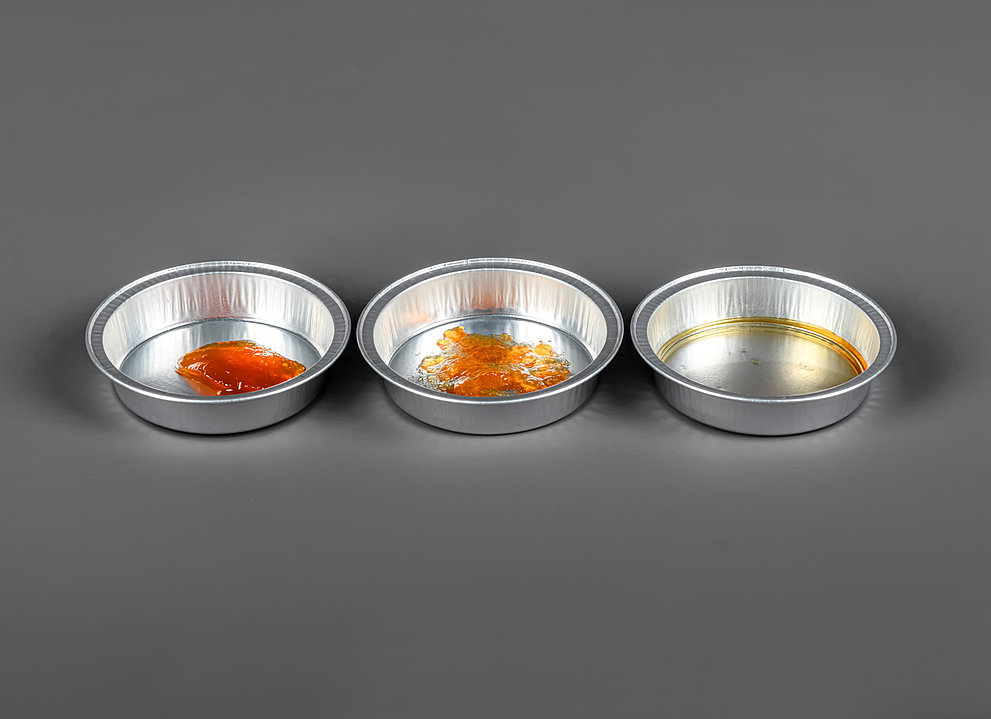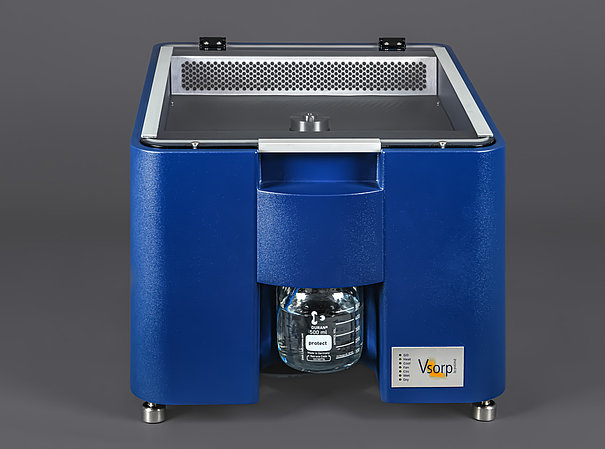Deliquescence
Deliquescence describes the transition from a crystalline solid to a dissolved state when a critical, material-specific relative humidity is exceeded. Such behavior is typically observed for hygroscopic substances due to their high affinity for the adsorption of moisture – usually in the form of water vapor from the surrounding atmosphere. With such products, this already occurs at low relative humidities. As a result, caking and, at higher moisture, deliquescence of the solids occurs frequently. Due to the associated adverse effects on the technological and sensory properties as well as the shelf life, hygroscopic products generally require special attention to the product-moisture interaction. In this context, dynamic water vapor sorption measurements play a decisive role in assessing the stability of both individual raw materials and the end products.
By understanding the hygroscopic behavior of a product, e.g., the storage conditions or the composition of the formulation can be optimized.
Application Notes

Deliquescence Lowering of Food Ingredients and Blends
Deliquescence can be observed in many crystalline food ingredients such as sugars, salts, organic food acids and vitamins. In mixtures, such ingredients usually show the phenomenon of a lower deliquescence point, i.e. the critical relative humidity at which deliquescence can be observed is reduced compared to the single component. This is relevant, for example, for dried food preparations such as instant drink powders, food supplements or spice mixtures. The associated adverse effects on product quality and handling properties make this an important topic in food research. Application Note 20-03 and White Paper 20-03 investigate the water vapor sorption and moisture-induced deliquescence as well as the effect of deliquescence lowering of some relevant hygroscopic food ingredients and mixtures.
Literature References for Investigating Deliquescence with the proUmid DVS Instruments
Adam M Stoklosa, et al. „Effects of storage conditions, formulation, and particle size on moisture sorption and flowability of powders: A study of deliquescent ingredient blends.“ Food research international 49, 783-791, 2012. DOI
Matthew Allan and Lisa J Mauer „Comparison of methods for determining the deliquescence points of single crystalline ingredients and blends.“ Food Chemistry 195, 29-38, 2016. DOI
Rebecca A Lipasek, et al. „Effect of temperature on the deliquescence properties of food ingredients and blends.“ Journal of Agricultural and Food Chemistry 61, 9241–9250, 2013. DOI
Lisa J Mauer and Lynne S Taylor „Deliquescence of pharmaceutical systems“ Pharmaceutical Development and Technology 15, 582-594, 2010. DOI



